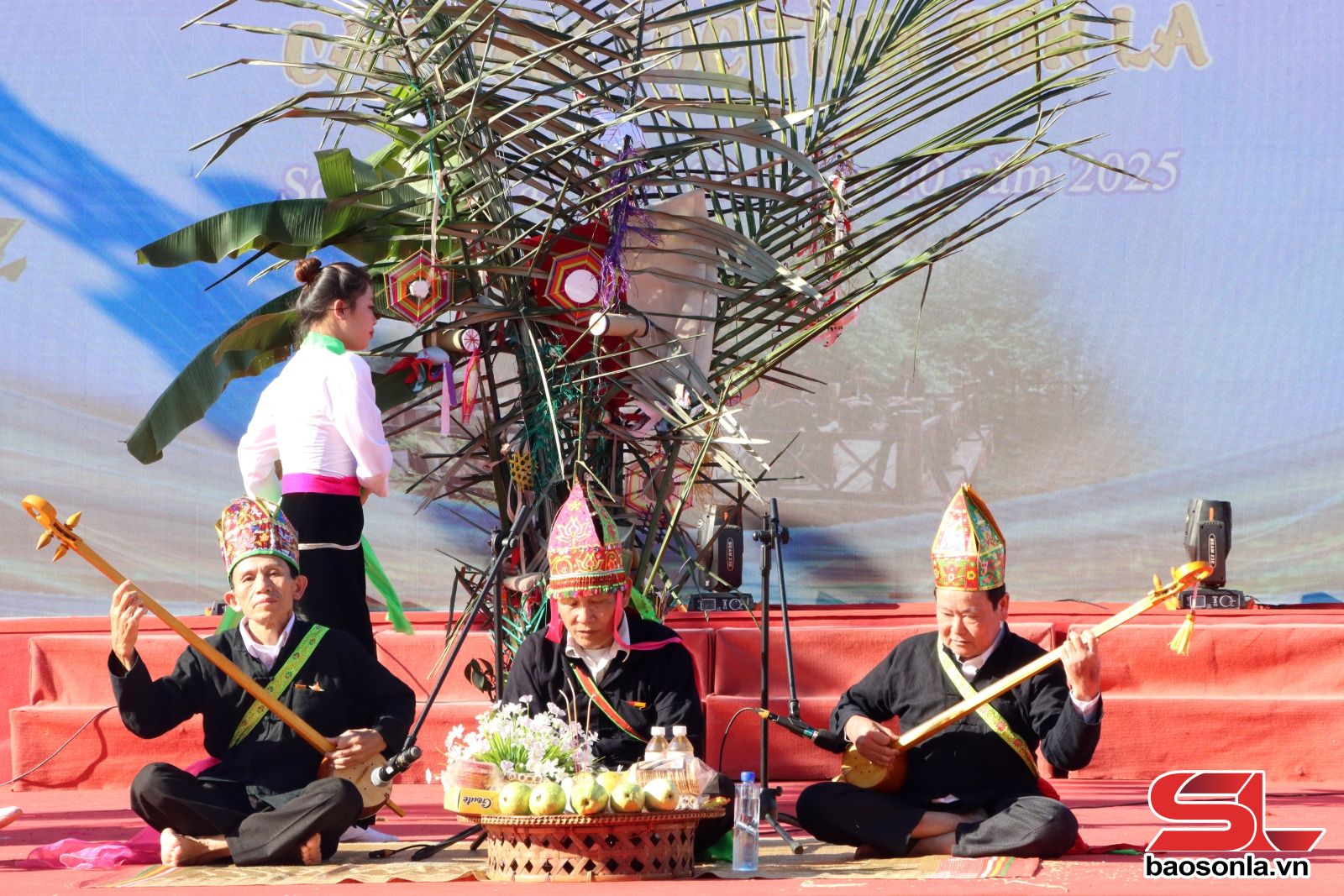
The offering rite of the Kin Pang Then festival.
The Thai Trang (White Thai) community in Quynh Nhai preserves various distinctive cultural traditions, including the Kin Pang Then ritual, which holds an important place in their spiritual and religious life. In 2020, the Ministry of Culture, Sports and Tourism recognised the Kin Pang Then festival as part of the national intangible cultural heritage.
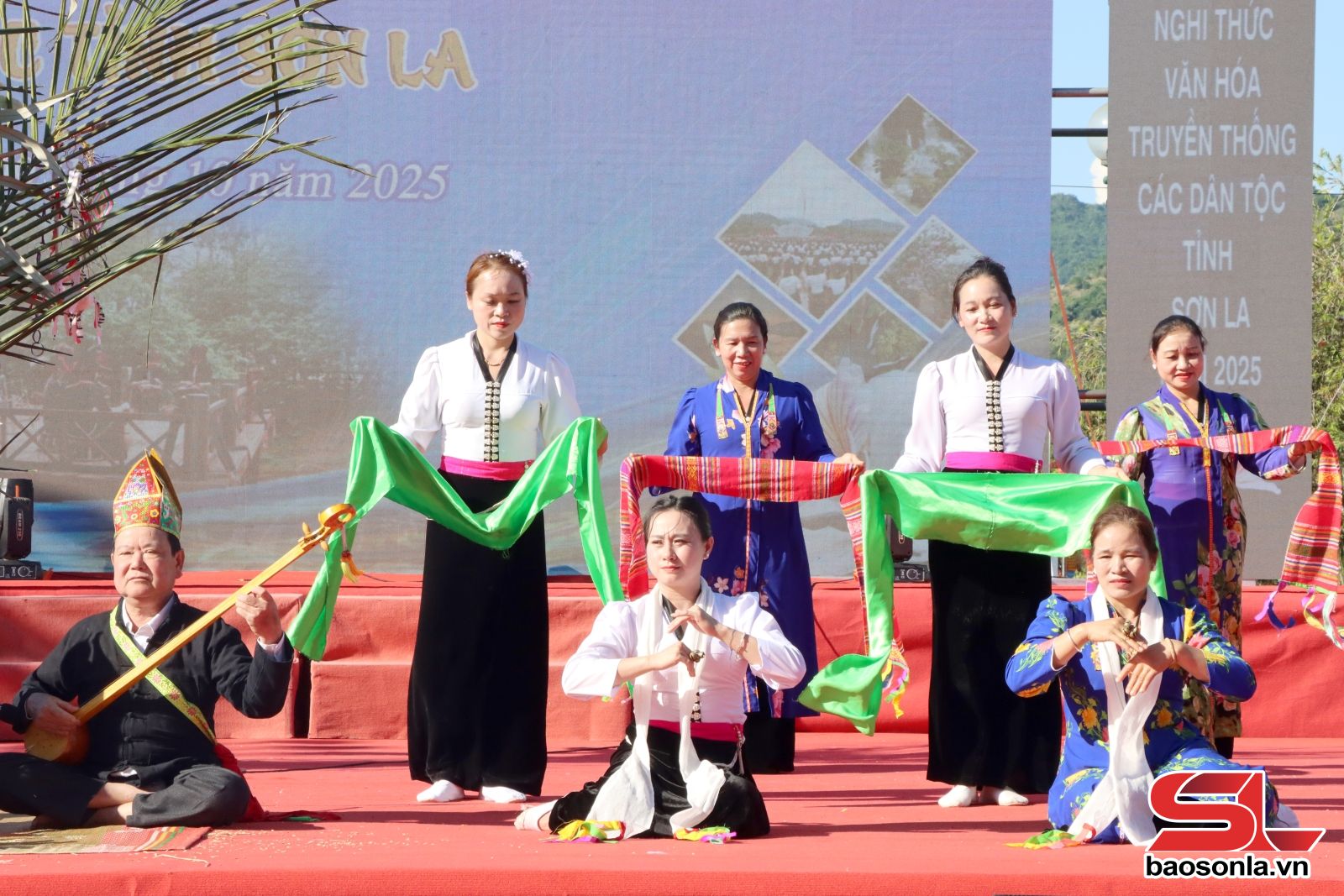
A reenactment of the Kin Pang Then ritual.
Kin Pang Then, also known as the “Adopted children festival,” is a highly community-oriented event featuring unique folk performances of the White Thai people. In the Thai language, “Then” refers to respected spiritual figures who perform rituals to heal illnesses and pray for the well-being of villagers. Those cured by the “Then” become their adopted children. The more people a “Then” heals, the more adopted children he/she has. Over time, it became customary to hold an annual gathering of these adopted children at the “Then’s” home. From this tradition, the Kin Pang Then festival was born and has been passed down through generations to this day.
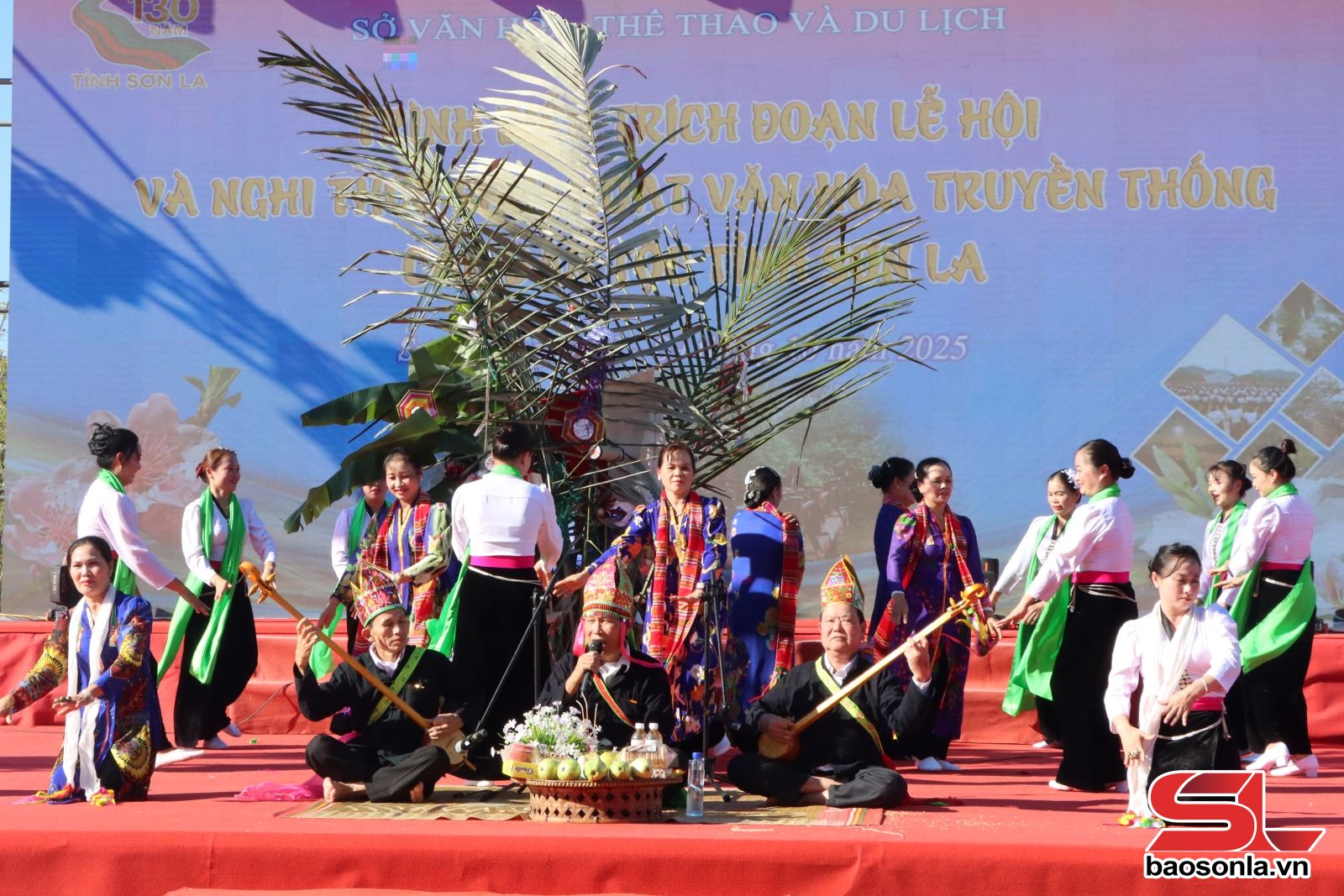
Performing an excerpt of the Kin Pang Then festival.
The Kin Pang Then festival is held annually or every two to three years, typically in early spring, from the third to the tenth day of the first lunar month. It’s a leisurely time of year when the “Then’s” adopted children return home, gathering to sing and dance together.
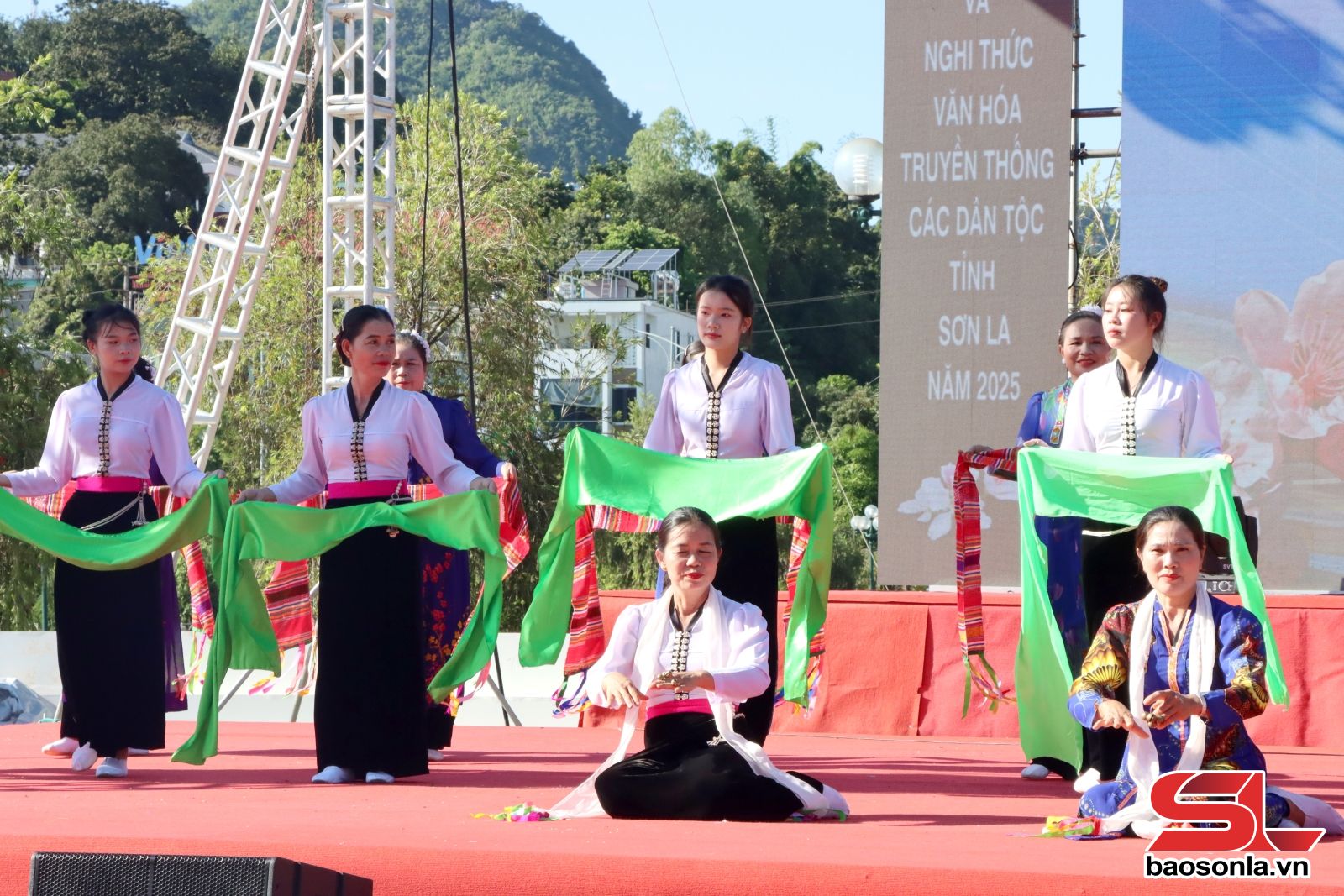
A scarf dance featured in the Kin Pang Then ritual excerpt.
The highlight of the Kin Pang Then festival lies in its vibrant performances - from musical fruit dances and rooster and scarf dances - performed by women’s troupes or mixed groups dressed in elaborate, colourful costumes. The dances are accompanied by the rhythmic sounds of the tinh lute, drums, and gongs. The most energetic moments come with the tang bu and xoe dances - collective performances where everyone joins in the celebration.






(1).jpg)
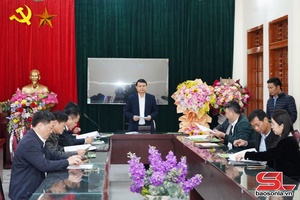









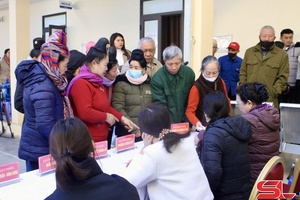





You have 500/500 characters left
Please enter 5 or more characters!!!